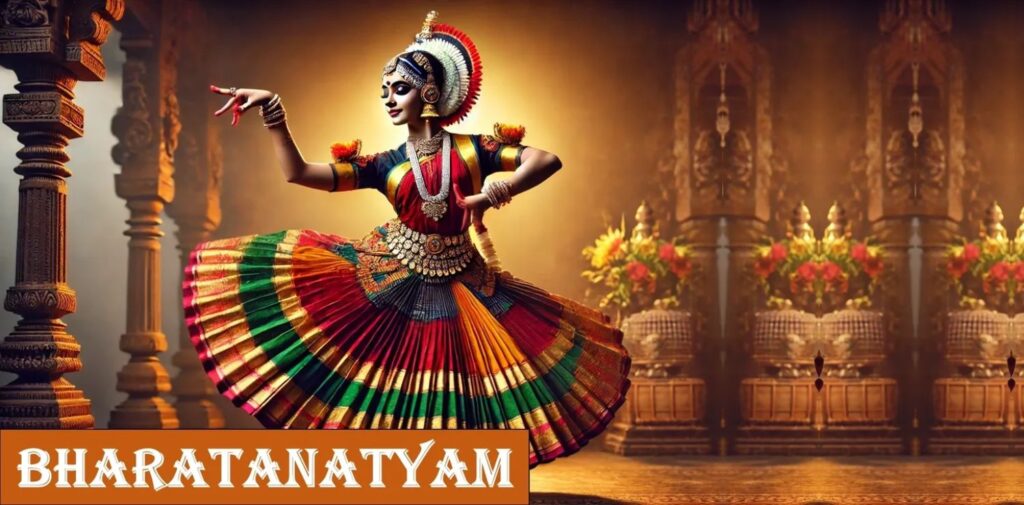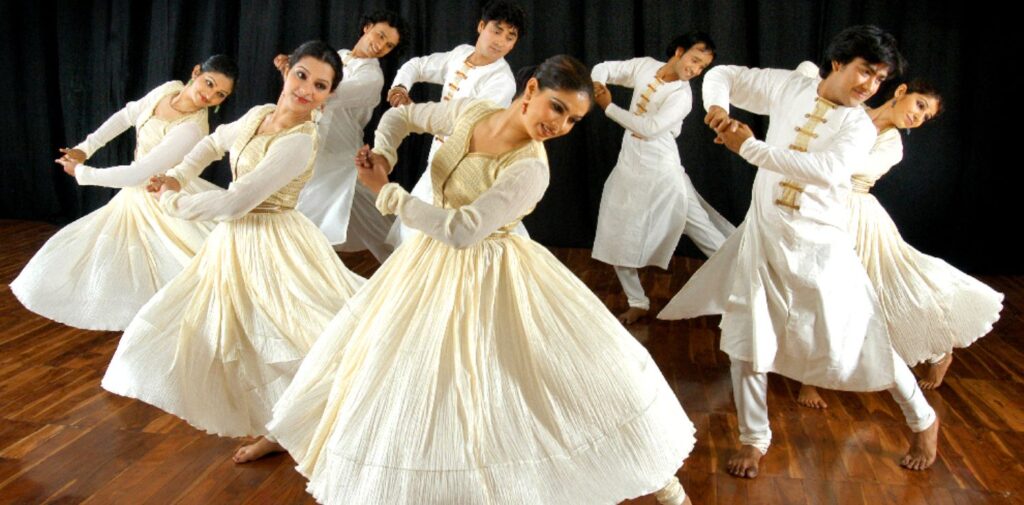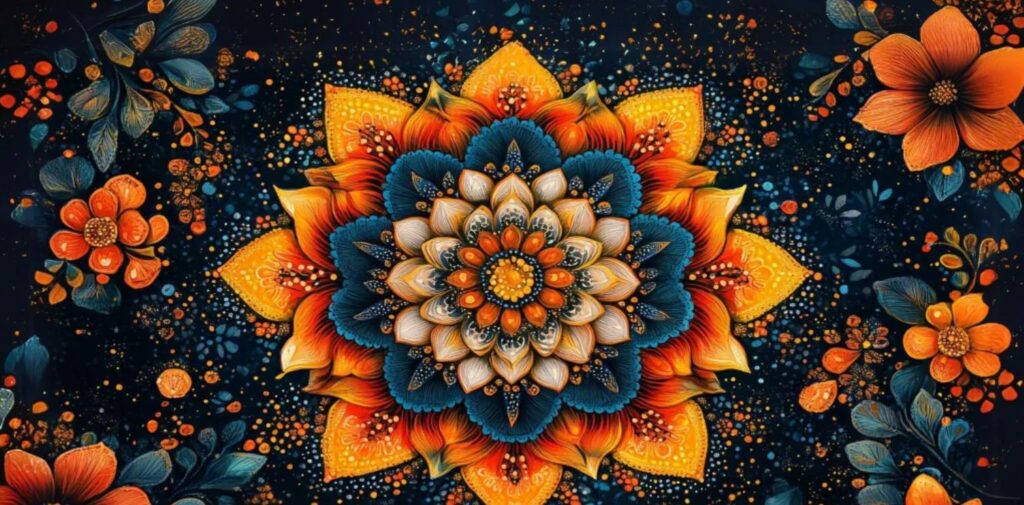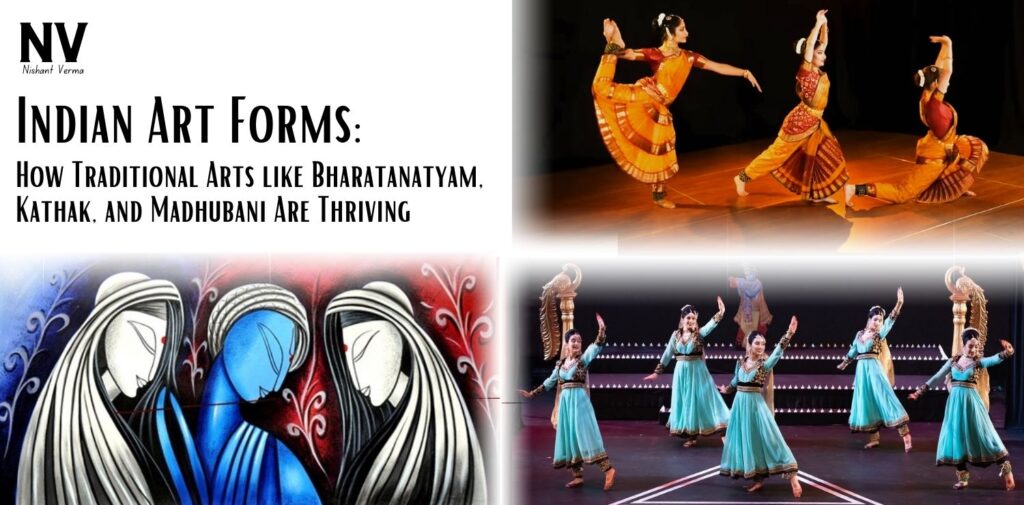India is a country rich in culture, history, and tradition. Its diverse art forms, some of which date back thousands of years, continue to thrive and inspire people worldwide. Among the many treasures of Indian culture, Bharatanatyam (a classical dance form), Kathak (another classical dance form), and Madhubani (a traditional art style) stand out. These art forms not only carry deep cultural meanings but also serve as powerful tools for spreading India’s heritage across the globe.
In today’s modern world, where technology and globalization are increasingly taking over, the beauty of traditional Indian arts has managed to remain alive and even grow in popularity. Through various efforts, Indian art forms have crossed boundaries and are now being celebrated across continents. These efforts have played a key role in promoting India’s rich traditions and heritage to a global audience. Let’s explore how Bharatanatyam, Kathak, and Madhubani are thriving worldwide and how they continue to help promote Indian culture.
Bharatanatyam: The Classical Dance of Grace and Storytelling
Bharatanatyam is one of the oldest classical dance forms in India. It originated in Tamil Nadu and has its roots in the temples of southern India. This dance form combines graceful movements, expressive gestures, intricate footwork, and storytelling through facial expressions. Bharatanatyam is not just about dance; it is a spiritual journey that conveys emotions and narrates stories from Indian mythology, especially from Hindu texts.

Global Recognition of Bharatanatyam
Over the years, Bharatanatyam has become one of the most recognized Indian classical dance forms worldwide. It has gained popularity in countries like the United States, the United Kingdom, Canada, and Australia. This is due to the efforts of talented dancers who have taken this art form to international stages, showcasing the beauty and complexity of Bharatanatyam.
The rise of dance academies and institutions offering Bharatanatyam lessons across the world has also contributed to its widespread appreciation. Many international schools, universities, and cultural organizations are including Bharatanatyam in their curriculum and hosting workshops and performances. Moreover, social media platforms like YouTube and Instagram have helped dancers and artists reach a wider audience, allowing them to share their performances with people from all corners of the globe.
Through Bharatanatyam, people around the world are learning about the spiritual, cultural, and artistic heritage of India. Dancers not only perform on stage but also teach the values of discipline, patience, and devotion that this dance form embodies. This contributes to a deeper understanding of Indian traditions, encouraging people from different cultures to appreciate and adopt elements of Indian art.
Kathak: The Dance of Storytellers
Kathak is another classical dance form that originated in India, with its roots in North India. The word ‘Kathak’ comes from the Sanskrit word ‘Katha,’ which means ‘story.’ Kathak dancers use elaborate footwork, spins (called ‘chakkars’), and hand gestures to tell stories. Traditionally, Kathak was performed in temples as a way of narrating religious tales, but over time, it evolved into a more formalized art, seen in both the royal courts and the modern stage.

The Worldwide Appeal of Kathak
Kathak is a popular art form not only in India but also around the world. Its unique blend of rhythm, storytelling, and grace has made it attractive to global audiences. The Western world, in particular, has embraced Kathak, with many international dance festivals featuring Kathak performances. Renowned Kathak dancers such as Pandit Birju Maharaj, Sitara Devi, and Uma Sharma have brought this art form to the global stage, earning acclaim and admiration worldwide.
Kathak’s fusion with other dance styles, such as ballet, contemporary dance, and jazz, has also played a significant role in its worldwide popularity. Dancers today experiment with combining Kathak with global forms of music and dance, creating new, hybrid performances that resonate with modern audiences while still preserving the core elements of this classical tradition.
Moreover, many dance academies, especially in countries like the United States, the United Kingdom, and Canada, are offering Kathak classes, allowing non-Indian students to learn and appreciate this dance form. Cultural exchanges, workshops, and collaborations between Indian and foreign artists have helped Kathak flourish beyond the boundaries of India.
Madhubani: The Art of Intricate Patterns and Color
Madhubani is a traditional form of painting that originates from the Mithila region of Bihar, India. Known for its intricate patterns and vibrant colors, Madhubani art is used to depict religious, cultural, and natural themes. The art form traditionally involved women artists painting on the walls of their homes, particularly during festivals and auspicious occasions. Today, Madhubani paintings are created on various surfaces such as paper, cloth, and canvas, and are used in both modern and traditional contexts.
Madhubani Art’s Growing Popularity Around the World
Madhubani has become one of the most loved art forms, both in India and across the globe. The unique beauty of this art—characterized by its use of geometric patterns, bright colors, and themes drawn from mythology, nature, and folklore—has caught the attention of art lovers worldwide. The distinctive style of Madhubani art makes it stand out, and it has become a sought-after collectible in international art markets.
Many international art exhibitions have featured Madhubani paintings, allowing people from different cultures to appreciate and learn about this traditional Indian art form. Several artists from India, including those from rural backgrounds, have gained recognition for their Madhubani paintings, promoting both the art form and the skill of rural women artisans.
The rise of online marketplaces and social media has also played a significant role in spreading Madhubani art worldwide. Artisans now have access to a global market, and art collectors, enthusiasts, and even interior designers are incorporating Madhubani paintings into their homes and workspaces.
Madhubani’s global reach has not only supported its preservation but also helped promote the cultural diversity of India. By showcasing this traditional art form, people from other countries are exposed to the rural life, mythology, and nature of India, creating a deeper understanding of the country’s rich cultural heritage.

Conclusion: Celebrating Indian Art Forms and India’s Artistic Legacy
In conclusion, traditional Indian art forms like Bharatanatyam, Kathak, and Madhubani are thriving worldwide, thanks to the dedication of artists and cultural ambassadors who continue to promote them across borders. These art forms not only showcase India’s rich cultural heritage but also provide a platform for cultural exchange and mutual respect among people of different backgrounds.
As more people around the world engage with Indian traditions, whether by learning Bharatanatyam, practicing Kathak, or appreciating the beauty of Madhubani, the global appreciation for India’s art forms continues to grow. These timeless traditions serve as powerful tools to promote India’s culture, values, and history, reminding the world of the beauty and depth of Indian artistic expression.
In a world increasingly shaped by technology and fast-paced living, the preservation and promotion of traditional Indian art forms offer a sense of grounding, connection, and continuity. They remind us of the power of creativity, storytelling, and cultural pride. The global success of Bharatanatyam, Kathak, and Madhubani is a testament to the lasting impact of India’s rich cultural legacy and its ability to resonate with people across the world, preserving India’s traditions for future generations to enjoy and celebrate.




